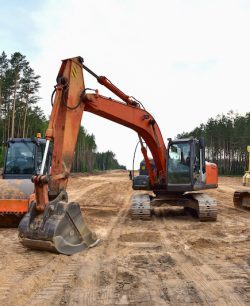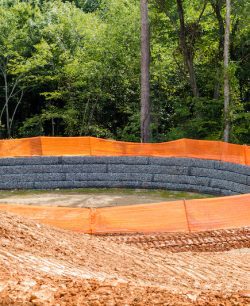Buckthorn Removal Services
Common Buckthorn and Glossy Buckthorn are both woody shrubs and small trees native to Europe and Asia. Buckthorn, introduced as an ornamental in North America during the early 1800s, has spread across the continent. Buckthorn is now found in almost every state and province. It invades forest and prairie habitats.
Buckthorn removal is essential for the health and well-being of forest ecosystems. Buckthorn invades habitats, competing with native plants for water, light and nutrients. This can change the landscape structure and reduce biodiversity. Buckthorn also alters the soil chemistry which can cause further damage to native plant communities. Buckthorn removal is essential to restore native plant communities, and maintain ecosystem.
What exactly is Buckthorn?
Common Buckthorn and Glossy Buckthorn are both woody shrubs and small trees native to Europe and Asia. Buckthorn, introduced as an ornamental in North America during the early 1800s, has spread across the continent. Buckthorn is now found in almost every state and province. It invades forest and prairie habitats.
Buckthorn can be a problem because it grows in many different conditions. It can grow from the full sun to deep shadow. Buckthorn also produces many seeds, which are spread by animals and birds. Buckthorn is one of the most invasive plants in North America because of its ability to compete with native plants and produce a high amount of seeds.
Buckthorn removal is essential for forest and prairie ecosystems. Buckthorn invades habitats, competing with native plants for nutrients, light and water. This can change the structure of the land and reduce biodiversity. Buckthorn also alters the soil chemistry which can cause further damage to native plant communities. Buckthorn removal is essential to maintain ecosystem health and restore native plant communities.
Buckthorn Identification.
Look for multiple and single stem trunks to identify Common buckthorn
The leaves are a dark gray or nearly black color with a shiny, smooth surface. As they age, the surface becomes scaly. The leaves are generally opposite and egg-shaped.The leaves are rounded at the edges and have 3 or 4 lateral veins.
Look for multiple and single stem trunks to identify Glossy Buckthorn
The leaves are a dusky gray to dark gray with lighter patches. The leaves are a dark gray with patches of lighter gray.
The edges are oblong and alternate.Edges are often toothless and wavy. The leaf’s surface is glossy, with six to nine parallel veins on each side. These are curled towards the tip.In late fall and early spring, the leaves do not change color. They retain their green color until the cold temperatures cause them to drop off the trees.
When ripe, the berries are shiny black with a diameter of about 1/4 inch. Buckthorn is an important food source to many wildlife species. As a result, the main way buckthorn spreads is through birds, which eat the berries, and then scatter the seeds.
Buckthorn Removal Methods
Hand Pulling
This DIY method is great for small stands. It involves removing the whole plant, including roots. This method is not chemical-based but requires more work.Remember that by pulling out plants, you are also disturbing more soil. It may result in soil runoff when heavy rains occur or during spring thaw. This can cause additional problems as the disturbed soil can release weed seeds into the soil.This technique is only recommended for small infestations.
Cut and Stump Treatment
This method works for large plants. The plant is cut down to its stump, and the stump is treated with herbicides to prevent any regrowth. After the material has been cut, we recommend that you remove it by burning or hauling it away. Cut slash can be used in low density areas. The material is cut into smaller pieces, and then left to decompose.
Forestry Mowing
This is a method for large areas where buckthorn is the dominant understory species. The skid steer will be equipped with a forestry cutter.The mulched material will then be spread out on the site for decomposition. This method does not allow for stump treatment, so it is important to follow up on the management of the plants.
Foliar Spray
This method is used to eliminate small buckthorn regrowth. To eradicate it, a selective herbicide can be sprayed onto the leaves. This is best done later in the autumn when the buckthorn leaves still remain green and are attached to the tree, while other trees have lost their leaves and gone dormant.Follow all instructions on the label to prevent harming animals or other plants.Repeat the treatment if necessary.You can finally rid your property from buckthorn if you are persistent.
Buckthorn Removal Benefits
Buckthorn removal can seem daunting, but the benefits are worth it. Removing this plant will have many benefits, including the restoration of native plants, the improvement of wildlife habitat and the reduction of spread of this invasive plant.
Buckthorn is removed and the native plant eco-system can gain foothold.Like most things in the natural world, this has a cascading effect.Native plant ecosystems create habitat for wildlife. With a successful remediation, you will begin to see wildlife more often.
Buckthorn removal is also a good way to enhance the value of your home.
Buckthorn Removal: Risks to be aware of
Buckthorn removal is beneficial in restoring an area’s natural ecology, but there are risks to be considered. Buckthorn removal may cause soil disturbance, which can lead to erosion. Buckthorn removal, if done incorrectly, can also lead to an increase in invasive plants.
By following a few simple best practices, you can minimize these risks.Use the right equipment to reduce soil disturbance.It is also important to dispose of the buckthorn in a manner that prevents it from spreading. You can check with your local municipality to find out if there is a place that accepts the buckthorn. Burning is another acceptable method of disposal, but check to see if your project requires a permit.



